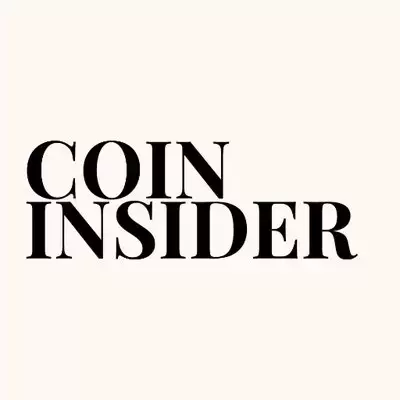 |
|
 |
|
 |
|
 |
|
 |
|
 |
|
 |
|
 |
|
 |
|
 |
|
 |
|
 |
|
 |
|
 |
|
 |
|
Cryptocurrency News Articles
Unveiling the Genesis of the Iconic Draped Bust Cent
Mar 25, 2024 at 10:35 pm
Copper cents in the early United States had a challenging history due to their size and reliance on imported copper. The Draped Bust Cent, introduced in 1796, marked a turning point with a more consistent design across silver and copper denominations. Despite initial production difficulties, Draped Bust Cents became extensively collected, with notable varieties such as the 1796 LIHERTY, 1798/7, and 1807/6 Small 7. Prices vary widely depending on date, variety, and condition, with uncirculated examples reaching thousands to hundreds of thousands of dollars.
![]()
What Was the Genesis of the Draped Bust Cent?
The Draped Bust cent, a ubiquitous figure in the early monetary landscape of the United States, emerged in the final months of 1796. This marked a significant shift in design philosophy, following the Chain, Wreath, and Liberty Cap predecessors.
Who Crafted the Draped Bust Cent's Intricate Design?
Chief Engraver Robert Scot and Assistant Engraver John Smith Gardner, both instrumental in shaping the Liberty Cap design, played pivotal roles in the Draped Bust's creation. Assistant Coiner Adam Eckfeldt also contributed to this endeavor.
Did Gilbert Stuart, the Renowned Portrait Artist, Have a Hand in the Design?
A long-held belief attributed the Draped Bust cent's design to Gilbert Stuart. However, meticulous research by numismatic scholars has failed to substantiate this claim.
What Intriguing Anecdotes Surround the Draped Bust Cent?
As with many early U.S. coin issues, the Draped Bust cent has its share of intriguing tales. Notably, not all coins in the series bear the date inscribed on them. Production of 1797-dated coins likely continued through late 1798, while 1798 coinage may have extended into mid-1799.
How Did a Senator's Hoard Impact the Availability of Draped Bust Cents?
In late 1797 or early 1798, Senator Benjamin Goodhue acquired a bag of 1,000 Draped Bust cents for his daughters. Preserved within the family for generations, this hoard was eventually sold around 1863, providing a substantial source of Mint State 1796 and 1797 pieces.
How Are Draped Bust Cents Categorized and Valued?
Collectors avidly pursue Draped Bust cents by both date and variety. While the Guide Book of United States Coins outlines some notable die varieties, it falls short of capturing the vast array of die marriages employed in the production of these coins from 1796 to 1807. Known as Sheldon Varieties, these variations range from affordable options to rare specimens with less than 10 examples in the condition census.
Where Were Draped Bust Cents Minted?
All Draped Bust Cents were struck at the Philadelphia Mint, the sole operating facility during their production period. No Proof strikings are known to exist for this series.
How Many Draped Bust Cents Are Estimated to Exist?
Approximately 14,000 circulation strike Draped Bust cents have been certified by CAC, NGC, and PCGS. PCGS holds the distinction of grading the most coins of this type, with over 9,500 pieces. The 1798 is the most frequently graded cent in the series, followed closely by the 1802.
What Factors Influence the Value of Draped Bust Cents?
Prices for many Draped Bust cents remain moderate up to low VF grades. However, they rise sharply in grades AU and above. Uncirculated examples can fetch thousands to hundreds of thousands of dollars, depending on the date, variety, and condition. Coins exhibiting Red Brown or Red hues command significant premiums over Brown specimens.
Which Draped Bust Cent Varieties Command Higher Prices?
Certain varieties stand out as particularly valuable: 1796 LIHERTY; 1799 and 1799/8; 1803 Large Date, Small Fraction; 1804 original issues; and 1807/6 Small 7.
What Precautions Should Collectors Take to Avoid Counterfeits?
Given the influx of deceptive counterfeit coins from China, it is imperative to purchase only coins authenticated and graded by CAC, NGC, or PCGS.
What Notable Varieties Distinguish Draped Bust Cents?
Draped Bust cent varieties have been extensively studied and are highly collectible. Among the most recognized are:
- 1796 Reverse of 1794, Reverse of 1795, and Reverse of 1796
- 1796 LIHERTY, resulting from a rotated and repunched B
- 1797 Gripped Edge, Stems, and Stemless
- 1798/7
- 1798 Reverse of 1796 and Style 1 and Style 2 Hair
- 1799/8
- 1800/1798 and 1800/79
- 1801 1/000 and 100/000 (wrong and corrected fractions)
- 1802 1/000
- 1802 Stemless
- 1803 Small and Large Date, and Small and Large Fraction
- 1803 100/000 and Stemless
- 1807/6 Small 1807 and Large 1807
- 1807 Small Fraction and Large Fraction
- 1804 Private Restrike, from dies discarded by the Mint
What is the Story Behind the 1804 Draped Bust Cent Restrike?
The 1804 restrike cent, a product of the mid-19th century, likely originated from dies sold as scrap metal by the Mint. After careful examination, numismatists determined that the 1804 date had been altered from 1803, and the reverse featured the design of an 1820 cent. While these restrikes hold some curiosity value, they lack the significance and value of official Mint-produced pieces.
Disclaimer:info@kdj.com
The information provided is not trading advice. kdj.com does not assume any responsibility for any investments made based on the information provided in this article. Cryptocurrencies are highly volatile and it is highly recommended that you invest with caution after thorough research!
If you believe that the content used on this website infringes your copyright, please contact us immediately (info@kdj.com) and we will delete it promptly.
-

-

-

-

-

-

-

- "ONDO Price Analysis – Where Is ONDO Heading Now?"
- Apr 26, 2025 at 12:10 pm
- "input: Ondo Finance (ONDO) is grabbing headlines today, not just for its 15% daily price surge, but also for being at the center of an important regulatory dialogue with the United States Securities and Exchange Commission (SEC)"
-

-





















![Trading is to follow [Review Video] Gold Bitcoin Crude Oil Orders Make Profits! Trading is to follow [Review Video] Gold Bitcoin Crude Oil Orders Make Profits!](/uploads/2025/04/26/cryptocurrencies-news/videos/trading-follow-review-video-gold-bitcoin-crude-oil-profits/image-1.webp)





































